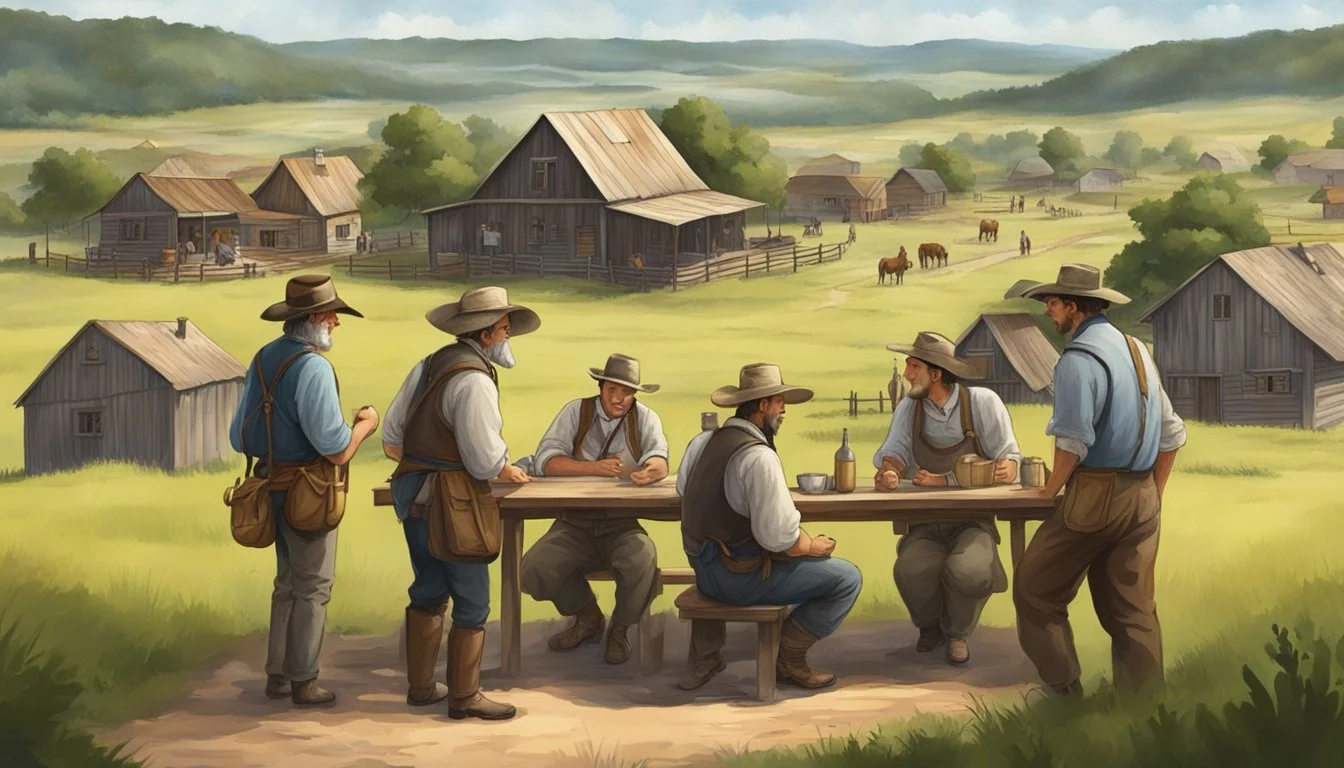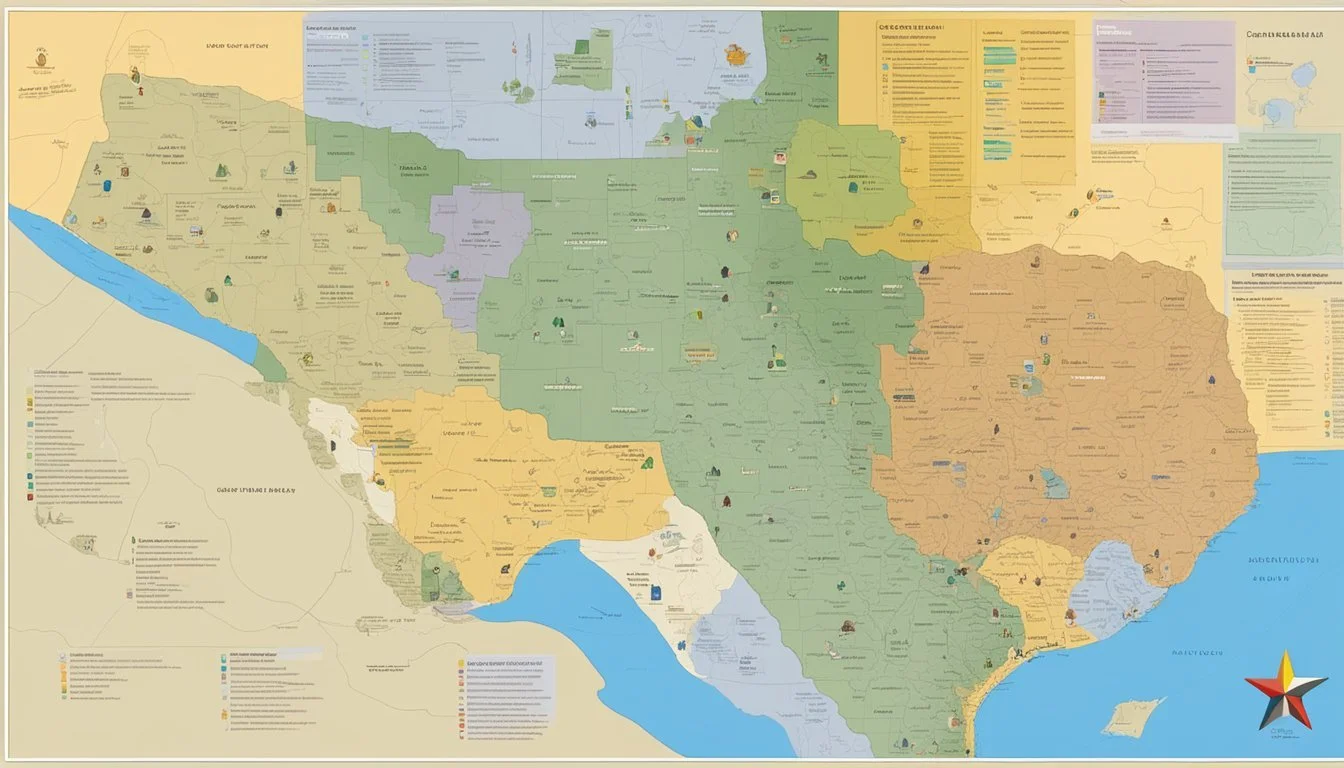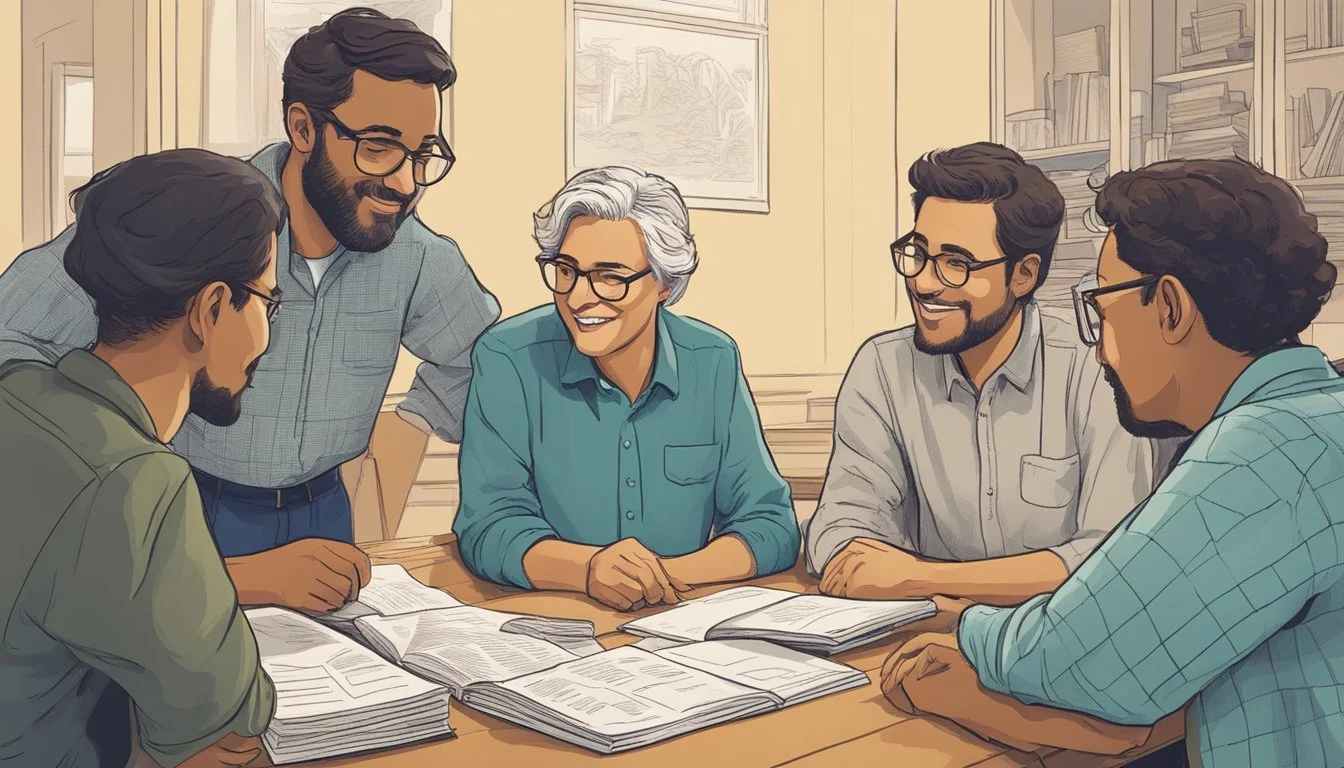The Texas German Dialect
Uncovering the Roots of a Unique Cultural Linguistic Heritage
The Texas German dialect is a unique linguistic phenomenon that represents a rich blend of cultural and historical influences. It emerged from the convergence of various German dialects spoken by immigrants who settled in Central Texas during the mid-19th century. Unlike other forms of German that evolved in the native regions of Germany, Texas German has developed independently, resulting in a distinct dialect that has caught the interest of linguists and cultural historians alike. Due to its significance, there have been concerted efforts to study and preserve this form of German, as it encapsulates a significant part of Texan heritage.
At the forefront of these preservation and research efforts is the Texas German Dialect Project, established in 2001. Housed within the University of Texas at Austin, this initiative aims to record and archive the various facets of Texas German. The project acknowledges the urgency of its mission, considering the rapidly diminishing number of native speakers, and thus seeks to capture the language in its most authentic form. Linguists involved in the project have been meticulously collecting data, which includes recordings of Texas German speakers, to analyze the structure and usage of the dialect.
Understanding Texas German involves more than just linguistic analysis; it requires an insight into the historical migration patterns and the social dynamics that shaped Texas. The dialect not only embodies a linguistic adaptation of German but also represents a narrative of cultural integration and identity. By exploring the nuances of Texas German, researchers contribute to a broader understanding of language evolution, cultural identity, and the phenomenon of language extinction.
Historical Background
The Texas German dialect, unique to the Texas Hill Country, emerged from the rich history of German immigration in the 19th century and experienced significant changes over time due to sociopolitical factors, including two world wars.
Early German Settlers in Texas
In the early 1830s, German immigrants began settling in Central Texas, an area which became known as the Texas Hill Country. Driven by the promise of new opportunities, these settlers brought with them their 19th-century German language and customs, planting the seeds for what would become a distinctive Texas German dialect.
Impact of World Wars on Texas German
During World War I and World War II, anti-German sentiment rippled throughout the United States leading to a stigma associated with all things German. In Texas, this manifested in suppressed use of the German language and culture. English-only laws further discouraged the use of German in both public and private spheres, deeply impacting the intergenerational transmission of the dialect.
Language Shift and Decline
The post-war period saw a rapid decline in the use of the Texas German dialect. Younger generations increasingly adopted English as their primary language, influenced by the broader Anglophone society and educational systems. The resulting language shift marked the dwindling use of Texas German, with the dialect facing the threat of extinction by the 21st-century.
The Texas German Dialect
The Texas German dialect represents a unique linguistic phenomenon resulting from German migration to central Texas and displays notable variations from standard German. It is a testament to language change and new dialect formation over time.
Characteristics and Variations
Texas German dialect is defined by its distinct characteristics that set it apart from the standard German language. Key phonetic and syntactic differences are observed, which vary significantly across communities in central Texas. These characteristics have been extensively studied by initiatives such as the Texas German Dialect Project at the University of Texas at Austin, aiming to document and preserve this linguistic heritage.
Phonetic Variations: Pronunciation can differ, with influences from English and other German dialects present in the early settler communities.
Lexical Choices: There is a range of vocabulary that is specific to Texas German, including loanwords from English and archaic German terms no longer used in contemporary standard German.
New Dialect Formation
The formation of Texas German is a prime example of new dialect formation, created when diverse dialects merge as speakers from different regions come into contact. This process was particularly facilitated by:
Migrations of 19th-century German settlers to central Texas
Interactions with English and other languages of the area
Isolation of communities allowing for unique linguistic developments to persist
Comparison to Standard German
When comparing the Texas German dialect to contemporary standard German, several clear differences arise. While they share the same Germanic roots, Texas German has developed idiosyncrasies owing to historical, cultural, and social factors.
Grammar: Certain grammatical structures in Texas German diverge from those in standard German. Verb placements and article usage can differ.
Vocabulary: Texas German preserves words that are no longer prevalent in modern standard German and has also incorporated terminology from English due to long-term bilingualism in the region.
Through documenting and analyzing robust samples of this dialect, organizations like the Texas German Dialect Project contribute to understanding the complexities of language variation and language change within immigrant languages.
Sociolinguistic Aspects
This section delves into the interactions between the Texas German dialect and its social environment, examining the dynamics of language contact, the struggle against language death, and the role of cultural identity in linguistic preservation.
Language Contact
Texas German is the result of a complex process of language contact, where German settlers in Texas once interacted with English speakers, creating a unique dialect. This contact led to borrowing and code-switching, as words and phrases were exchanged between the two language communities. The result was a dialect distinct in vocabulary and structure from both standard German and English.
Language Death and Preservation
The phenomenon of language death is particularly pertinent to Texas German, which saw its use decline as English became the dominant language in the region. Efforts for preservation have emerged in response, including the Texas German Dialect Project aimed at recording and maintaining the language through sociolinguistic interviews and digital archiving.
Preservation Initiatives
Texas German Dialect Project (TGDP)
Digital archiving of linguistic resources
Cultural Identity and Language
Cultural identity is tightly knit with language, where Texas German serves as a marker for cultural heritage. As speakers used the dialect, they performed cultural practices and preserved heritage languages, reinforcing community ties. Language, in this context, operates as both a social tool and a repository of cultural history, conveying traditions and shared values among its users.
Research and Documentation
In the field of linguistics, preserving and studying language variants are crucial, particularly for dialects facing extinction. The Texas German dialect, with its unique heritage in central Texas, is the subject of robust research and documentation efforts, including the Texas German Dialect Project, archiving initiatives, and contributions from the Linguistic Research Center.
Texas German Dialect Project (TGDP)
The TGDP serves as a focal point for researching the Texas German dialect. It sets out to record interviews with speakers to preserve the dialect and provides critical research data on linguistic diversity. The TGDP’s work involves not only documentation but also the engagement of educational programs designed to increase awareness of linguistic and cultural traditions.
Documentation activities include:
Recording Interviews: Capturing authentic language use by native speakers.
Gathering Data: Collecting basic research information which informs linguistic studies.
Archiving Efforts
The Texas German Dialect Archive plays a vital role in safeguarding the language by cataloging recordings and other linguistic artifacts. This archive makes materials available for research on language contact, new-dialect formation, and current language use patterns.
Archiving Efforts lead to:
Preservation: Ensuring the longevity of language materials for future generations.
Accessibility: Providing resources for public and scholarly access.
Linguistic Research Center Initiatives
Initiatives by the Linguistic Research Center (LRC) complement TGDP’s efforts by utilizing the collected materials for advanced analysis and study. The LRC actively supports linguistic investigation, potentially contributing to the body of work such as the Linguistic Atlas of Texas German. Through these initiatives, the center contributes not only to academic understanding but also to community enlightenment.
LRC Initiatives aim to:
Extend Research: Further linguistic inquiry based on archived materials.
Promote Education: Develop and support educational programs on Texas German.
Each of these entities works in tandem to ensure that the Texas German dialect is not only preserved for posterity but also continually serves as a resource for linguistic enlightenment and cultural appreciation.
Influence and Integration
The Texas German dialect represents a unique linguistic amalgamation, influenced by English and various European languages. Its development showcases the complexity of language evolution in multicultural settings.
English and German Language Intersection
The intersection of English and the German language in Texas German dialect manifests through vocabulary borrowing and syntactic blending. Loanwords from English are common, while certain German sentence structures persist. This interplay results in a distinctive hybrid vernacular, where one might hear an English word following German grammar rules.
Examples of English Influence:
Vocabulary: Adoption of English terms for modern concepts or objects not present during the emigration of German speakers.
Grammar: Use of German grammar patterns with English words, such as applying German adjective endings to English adjectives.
Other Regional Language Influences
Beyond English, Texas German has absorbed elements from other regional languages due to Texas's linguistic diversity. Texas Czech and Texas Polish, brought by Slavic immigrants, have contributed to the linguistic tapestry. Moreover, lesser-known influences such as Indiana German reveal the complexity of German dialects across the United States.
Notable Non-English Influences:
Texas Czech: Czech words and phrases appear in regions with significant Czech populations, reflecting cultural and linguistic exchange.
Texas Polish: Echoes of Polish can be found, although less prevalent than Czech.
Indiana German: Comparisons with Indiana German highlight the variability among German-speaking enclaves in America.
The resulting dialect is a testament to cultural and linguistic resilience, evolving to incorporate elements from the surrounding speech communities while retaining its Germanic roots.
Community and Outreach
The Texas German dialect represents not just a language, but a cultural legacy with deep roots in the communities of central Texas. Efforts to sustain and celebrate this heritage are vital for the dialect's preservation and the education of future generations.
Preservation of the Texas German Community
The Texas German Dialect Project (TGDP) at the University of Texas at Austin has been a pivotal force in maintaining the dialect spoken by the Texas German community. By systematically recording the language of its last fluent speakers, TGDP preserves not only a linguistic artifact but also a piece of cultural identity for posterity. This initiative also fosters a sense of pride and cohesiveness among individuals of German descent residing in Texas.
Educational Outreach Programs
The TGDP's outreach programs engage with both the academic community and the general public.
Educational Interests: Promotion of linguistic diversity and cultural history is incorporated into curricula.
Community Outreach Programs: Workshops and talks aim to educate and involve the community in preservation efforts.
Educational Outreach Programs
The TGDP extends beyond the scope of research, emphasizing educational outreach. They develop programs designed to inform and inspire both speakers of Texas German and individuals with potential educational interest in the field of linguistics. These programs take form as:
Activities and Resources
Workshops and seminars provide hands-on learning opportunities.
Materials are created and distributed to support the instruction and study of the Texas German dialect.
By sharing knowledge and resources, the TGDP and the University of Texas strengthen the connection between the academic study of language and real-world linguistic communities.
Future of Texas German
The Texas German dialect, having experienced a decline, faces critical times where its survival hangs in the balance. This unique linguistic heritage calls for concerted efforts to ensure its perpetuation.
Challenges and Opportunities
Challenges: Texas German, a dialect spoken historically by German immigrants in Central Texas regions such as New Braunfels, Fredericksburg, Comfort, and Gillespie County, is endangered. The number of native speakers is dwindling due to generational language shift and assimilation into English-speaking society. Preserving the language is further complicated by its numerous variants, which reflect the diverse origins of the German settlers.
Opportunities: Despite these challenges, Texas German presents opportunities for linguistic and cultural enrichment. There is a deeper societal appreciation for heritage languages and cultural diversity, setting the stage for revitalization efforts. Harnessing this interest can play a pivotal role in the dialect's improvement and development.
Educational and Development Strategies
Educational Programs: To bolster the continuation of Texas German, focus must be placed on educational initiatives. Programs aimed at both young and adult learners could include:
Language courses at community centers in historically Texas German-speaking towns.
Integration of Texas German into curricula in local schools, with an emphasis on areas with a strong historical presence of the dialect.
Development Strategies: The workflow for preserving Texas German should be multifaceted, involving:
Recording and documenting the language by organizations committed to its preservation.
Developing digital resources, such as mobile applications and online courses, to make learning Texas German accessible.
Hosting cultural events and festivals in areas like New Braunfels and Gillespie County to celebrate and promote the Texas German heritage.
By tackling the issues with a strategic blend of educational development and public engagement, there is a pathway to ensure that Texas German not only survives but flourishes in the coming years.
Contributions to Linguistics
Linguistic research regarding the Texas German dialect provides critical insights into language evolution and shifts in linguistic theory. Scholars have dedicated efforts to study this unique linguistic phenomenon, revealing valuable contributions to the broader field of linguistics.
Insights from Texas German Studies
Texas German studies, spearheaded by initiatives such as the Texas German Dialect Project, have unearthed a wealth of information on linguistic traditions. The dialect is considered a unique blend of German language elements, which have evolved distinctly due to the geographic and cultural separation from the native German-speaking regions. Researchers, including Hans Boas from the Department of Germanic Studies, have played a pivotal role in documenting the Texas German dialect. They have compiled extensive resources that not only fortify Germanic studies but also enrich the understanding of language change and preservation within minority language groups.
Boas and his team have conducted rigorous fieldwork, yielding substantial audio recordings and written documents that archive the dialect's features. These linguistic artifacts, housed at the University of Texas at Austin, serve as a rich repository for scholars exploring the adaptation of Indo-European languages in new sociolinguistic contexts.
Influence on Linguistic Theory
The study of the Texas German dialect has directly influenced linguistic theory, providing empirical data that can challenge or reinforce existing models of language change and attrition. Glenn Gilbert’s seminal work, published by Duke University Press, on the linguistic atlas of Texas German, presents a valuable comparative analysis of the dialect variations across different Texan communities. His documentation offers crucial evidence of how isolated language communities can develop unique linguistic characteristics over time.
Gilbert's and others' efforts yield critical insights into the dynamics of dialect death and language preservation, influencing theories about language vitality and endangerment. Texas German's gradual decline furnishes a natural laboratory to observe linguistic phenomena, offering a microcosm that reflects broader linguistic patterns and transformations. The research outputs solidify our understanding of language evolution and provide a salient example of the complexities inherent in sustaining linguistic diversity.
Supporting the Research Community
The preservation and study of the Texas German dialect rely significantly on a collective effort that involves both the academic community and volunteers. Their collaboration contributes to building a comprehensive understanding of this unique linguistic phenomenon.
Roles of Academics and Volunteers
Academics play a pivotal role in the Texas German Dialect Archive (TGDA) by conducting fieldwork, analyzing data, and adding to the body of knowledge through scholarly articles and teaching. Undergraduate and graduate students, often working as research assistants on a paid basis, are instrumental in collecting and cataloging data, which requires a keen understanding of database management and human subjects' protocols.
Volunteers, including members from the public and organizations such as the Sophienburg Archive, assist greatly in historical preservation efforts by contributing personal anecdotes, historical documents, and other materials that add depth and context to linguistic research. They often submit recordings of the Texas German dialect, which are then edited using tools like Audacity, facilitating further analysis and archiving.
Advancements in Research Techniques
In recent years, advancements in research techniques have shaped the manner in which data on the Texas German dialect is gathered, stored, and analyzed. Cutting-edge technologies have streamlined database management, enabling a more systematic and accessible arrangement of data. Consequently, this fosters a fertile ground for multidisciplinary research, crossing into fields such as journalism, radio-television-film (RTF), communications, sociology, and anthropology.
Documentary methods have also evolved, with researchers employing both audio and video to capture the nuances of the dialect. This media is then meticulously reviewed and transcribed, often by teams that include historians and specialists in sociology and anthropology, to ensure its historical and cultural accuracy. These advancements have significantly contributed to the robustness of the research and its applications in teaching and broader cultural understanding.






